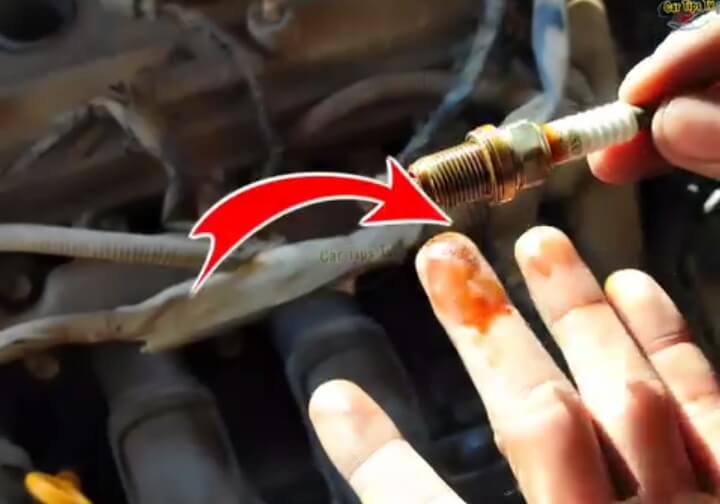As an Amazon Associate, we earn from qualifying purchases. This does not affect the price you pay or the quality of the products you buy. For more information, please read the full affiliate disclosure here.
Generator spark plugs are one of the most important components of a generator’s ignition system.
They are an essential device that ignites the fuel-air mixture in the engine’s combustion chamber, providing the necessary power for the generator to function.
Spark plugs consist of a ceramic insulator with a metal electrode at its center, which sparks to ignite the fuel-air mixture.
The gap between the metal electrode and the ceramic insulator is another important aspect in determining the spark plug’s effectiveness.
This article aims to provide detailed information on generator spark plug gaps, including their importance, maintenance tips, factors affecting them, and how to measure and adjust them.
What is a Spark Plug Gap?
The spark plug gap refers to the distance between the center and ground electrode of the spark plug.
It determines the voltage required to create a spark between the electrodes and ignite the fuel and air mixture in the engine.
The optimal spark plug gap varies depending on the engine size, fuel type, ignition system, and operating conditions.
For generators, the spark plug gap is typically in the range of 0.028 to 0.031 inches (0.7 to 0.8 mm), but it may vary depending on the manufacturer and generator brand.
A wider spark plug gap requires higher voltage to create a spark, which can stress the ignition system and reduce the spark plug’s lifespan.
A narrower spark plug gap may not provide enough spark energy to ignite the fuel mixture, resulting in misfires, power loss, and increased emissions.
Why is Spark Plug Gap Important in Generator Operation?
The spark plug gap plays an important role in ensuring optimal generator performance, fuel efficiency, and emissions.
In addition, here are some reasons why spark plugs gap matters in generator operation:
- Ignition system stress: The wider the spark plug gap, the higher the voltage required to create a spark. This can stress the ignition system and reduce its lifespan. On the other hand, a narrower spark plug gap may not provide enough spark energy to ignite the fuel mixture, causing misfires and reduced power output.
- Fuel efficiency: A correct spark plug gap ensures efficient combustion of the fuel and air mixture in the engine, which leads to better fuel economy and reduced emissions. If the spark plug gap is too wide, unburned fuel may escape into the exhaust system, leading to increased emissions and reduced fuel efficiency.
- Power output: The spark plug gap directly affects the engine’s power output. If the gap is too wide, the engine may misfire, causing reduced power output and increased emissions. If the gap is too narrow, the engine may not produce enough power to meet the demand.
How to Measure and Adjust Spark Plug Gaps in Generators
Measuring and adjusting spark plug gaps is a simple process that requires a few tools and some patience.
This part explains the steps to measure and adjust spark plug gaps in generators, but first, you will need the following tools.
- Firstly, a Feeler gauge is set to help measure the gap widths of the spark plug.
- Secondly a spark plug socket.
- Wire brush to clean the spark plugs if dirty.
- You will also need a spark plug ratchet or wrench.
- Then lastly, a spark plug gap tool (optional).
And after you have gotten the tools, here are steps to take when adjusting and measuring your spark plug gap.
- Firstly, turn off the generator and let it cool down.
- Remove the spark plug wire from the spark plug.
- Use the spark plug socket and ratchet or wrench to remove the spark plug from the engine.
- Clean the spark plug with a wire brush and check the electrode gap with a feeler gauge. The gauge should fit snugly between the electrodes without forcing it.
- If the gap is too wide or narrow, use the spark plug gap tool or needle-nose pliers to gently bend the ground electrode until the gap is within the recommended range.
- Reinstall the spark plug into the engine and tighten it to the manufacturer’s torque specifications.
- Reconnect the spark plug wire to the spark plug.
Generator Brands And Their Spark Plug Gap
Here are some brands and their spark plug gap. If yours is not here, you can make use of the comment section for a recommendation.
- Honda: 0.028 – 0.031 in (0.7 – 0.8 mm)
- Yamaha: 0.024 – 0.028 in (0.6 – 0.7 mm)
- Generac: 0.028 – 0.031 in (0.7 – 0.8 mm)
- Champion: 0.028 – 0.031 in (0.7 – 0.8 mm)
- Westinghouse: 0.028 – 0.031 in (0.7 – 0.8 mm)
- Briggs & Stratton: 0.030 in (0.76 mm)
- DuroMax: 0.025 – 0.028 in (0.63 – 0.71 mm)
- WEN: 0.028 – 0.031 in (0.7 – 0.8 mm)
- Pulsar: 0.028 – 0.031 in (0.7 – 0.8 mm)
- CAT: 0.028 – 0.031 in (0.7 – 0.8 mm)
- Ryobi: 0.020 – 0.028 in (0.5 – 0.7 mm)
Tips for Maintaining Spark Plug Gap in Generators
Maintaining the correct spark plug gap is crucial for optimal generator performance and longevity.
Here are some tips for maintaining spark plug gaps in generators:
- Regular inspection: Inspect the spark plugs at least once a year or after every 100 hours of operation. Look for signs of wear, corrosion, fouling, or damage, and replace them if necessary.
- Proper installation: Ensure that the spark plugs are installed correctly, tightened to the manufacturer’s torque specifications, and connected to the correct wire. Use dielectric grease to protect the plug threads and prevent moisture and corrosion.
- Cleanliness: Keep the spark plugs and the surrounding area clean and free of debris, oil, or dirt that can cause arcing or misfiring. Use compressed air or a wire brush to clean the spark plug, but avoid using abrasive materials that can damage the electrodes.
- Fuel quality: Use high-quality fuel that meets the manufacturer’s specifications to avoid fouling or damaging the spark plugs. Avoid using old or contaminated fuel that can clog the fuel system or cause engine problems.
Frequently Asked Questions
Is it better to have a bigger spark plug gap?
No, it is not necessarily better to have a bigger spark plug gap as it can negatively affect the engine performance.
What happens if the spark plug gap is too big?
If the spark plug gap is too big, the engine may misfire, have a rough idle, and experience decreased power and fuel efficiency.
When should I replace my spark plug in my generator?
It is recommended to replace the spark plug in your generator every 100 hours of use or at least once a year, whichever comes first.
How long do generator spark plugs last?
The lifespan of generator spark plugs varies depending on factors such as usage and maintenance, but generally,they can last up to 500 hours.
Conclusion
To make your generator work effectively, you have to consider the spark plug gap. However, each generator brand and models have their measurements.
Be sure to always consult your generator manual for the preferred spark plug gap. But in case you can’t find any there, you can make use of the one in this article.
If you’d still want to learn more about generators and how they work, check out the following articles:
- FAQs: How Long do Generators Last?
- How to Fix a Generator Spark Plug: 5 Top Ways
- What Type of Spark Plug for Predator 4000 Generator?
- FAQs: What Type Of Spark Plug For Honda Generator EU2200i
Stay Connected with Us!
Follow us on Facebook and Twitter for the latest updates on staying safe online. Don't forget to subscribe for more tips directly in your inbox!
Follow on Facebook Follow on X Follow on Pinterest Join Our Private Facebook Group

